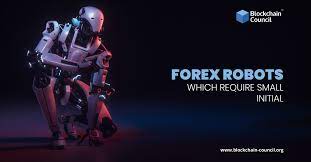In the realm of financial markets, the forex (foreign exchange) market stands out as one of the most dynamic and lucrative arenas for traders worldwide. With a daily trading volume exceeding $6 trillion, it offers immense forex robot for profit, but also presents significant challenges, including volatility, complexity, and the need for timely decision-making.
To navigate this terrain, traders have traditionally relied on a combination of analysis, experience, and intuition. However, in recent years, technological advancements have ushered in a new era of trading: the era of forex robots.
What exactly are forex robots? Also known as expert advisors (EAs) or algorithmic trading systems, forex robots are computer programs designed to automatically execute trades on behalf of traders. These robots operate based on predefined sets of rules and algorithms, often incorporating technical indicators, price action patterns, and statistical analysis to identify trading opportunities.
The allure of forex robots lies in their potential to remove human emotions from the trading equation. Fear, greed, and indecision, which often plague human traders, are non-existent for these automated systems. Instead, they operate strictly based on logic and parameters set by their developers.
One of the primary advantages of forex robots is their ability to trade around the clock, without the need for constant supervision. Unlike human traders who require rest, forex robots can monitor the markets 24/7, executing trades at any time, even during periods of high volatility or when the trader is unavailable.
Moreover, forex robots can process vast amounts of data within milliseconds, enabling them to react swiftly to changing market conditions. This speed and efficiency can be crucial in capturing fleeting opportunities or avoiding significant losses.
However, while forex robots offer undeniable benefits, they are not without limitations and risks. Like any automated system, they are only as effective as the algorithms that power them. A poorly designed or inadequately tested forex robot can lead to substantial financial losses.
Additionally, forex robots operate within the framework of historical data and predefined parameters, which may not always reflect current market conditions or unexpected events. As such, they are susceptible to market anomalies and black swan events that fall outside their programmed parameters.
Furthermore, reliance solely on forex robots can lead to a disconnect from the market and a lack of understanding of fundamental trading principles. Traders may become overly reliant on automation, neglecting the importance of market analysis, risk management, and strategic decision-making.
Despite these drawbacks, the popularity of forex robots continues to grow, fueled by advancements in artificial intelligence and machine learning. Modern forex robots are increasingly sophisticated, incorporating adaptive algorithms that can learn from past trades and adjust their strategies accordingly.
In conclusion, forex robots represent a powerful tool for traders seeking to automate their trading processes and capitalize on opportunities in the forex market. However, they are not a panacea and should be used judiciously, alongside traditional trading methods and prudent risk management practices.
Ultimately, success in forex trading requires a balanced approach that leverages both automation and human expertise. By harnessing the capabilities of forex robots while remaining grounded in sound trading principles, traders can maximize their chances of success in this dynamic and ever-evolving market.


